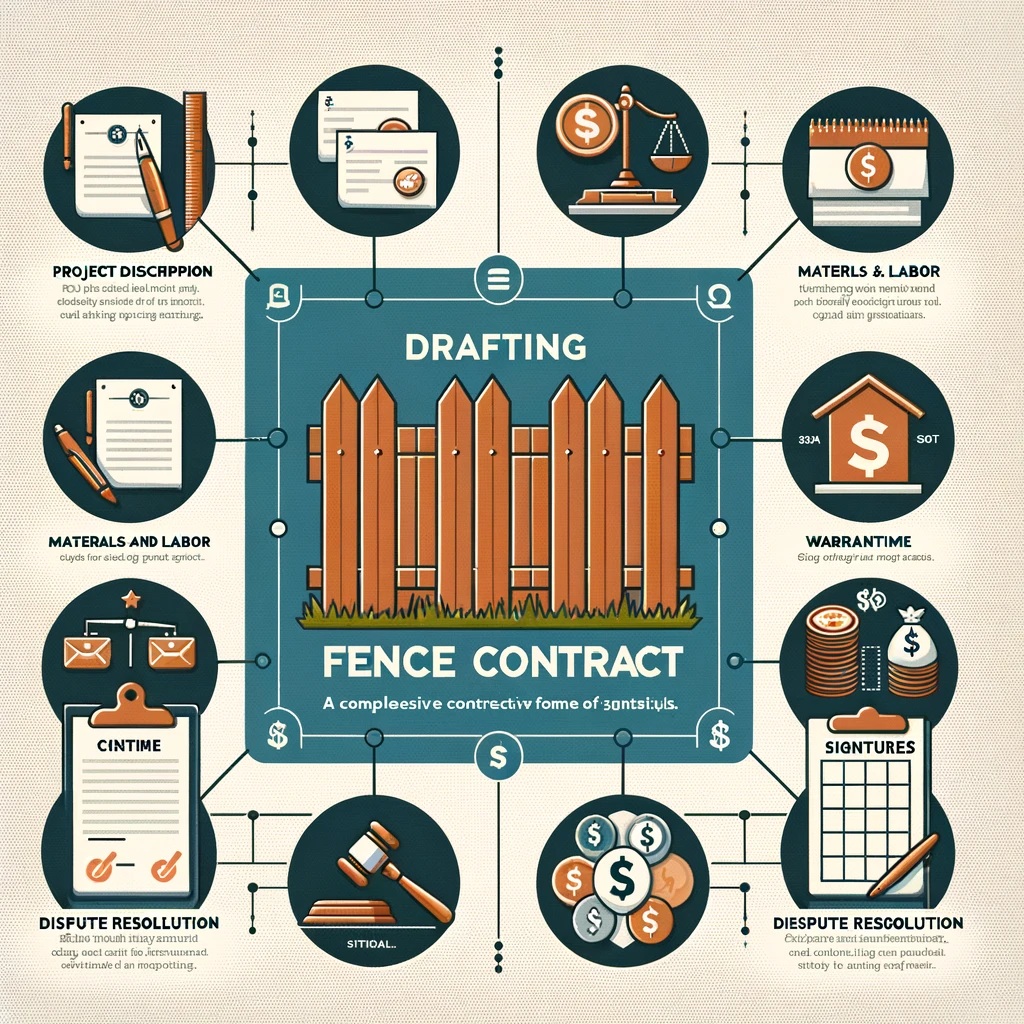Crafting a Comprehensive Fence Contract: A Free Template and Guide

In the realm of residential and commercial property improvements, erecting a fence is a common project that requires clear communication and agreement between the property owner and the contractor. A well-drafted fence contract ensures that both parties are aligned on the project's scope, cost, timeline, and quality expectations. This article provides a comprehensive guide to drafting a fence contract, complete with a free template and authoritative resources to ensure your agreement is solid and legally sound.
Understanding the Importance of a Fence Contract
A fence contract is a legally binding agreement that outlines the specifics of a fencing project. This document serves to clarify the project's scope, materials to be used, project duration, payment terms, and the responsibilities of both parties. It helps prevent misunderstandings and disputes, ensuring the project is completed to the satisfaction of both the property owner and the contractor.
For a foundational understanding of contract law, refer to the Cornell Law School's Legal Information Institute.

Create & Review Your Contracts 10x Quality and Ease
Lawyer-level AI handles all your contract needs, with real lawyers providing safeguarding support

Key Elements of a Fence Contract
Project Description
The contract should begin with a detailed description of the project, including the type of fence to be installed, total length, height, materials, and color. Specify any special features such as gates or decorative elements.
Scope of Work
Clearly define the work to be performed, including preparation work, installation process, cleanup, and disposal of old fencing materials. This section ensures both parties agree on what is included in the project.
For guidance on defining the scope of work, Wikipedia’s page on Scope of Work offers a broad overview.
Schedule and Duration
Include a project timeline, stating the start date and estimated completion date. Consider adding provisions for delays due to weather or material availability.
Cost and Payment Terms
Detail the total cost of the project, including materials, labor, and any additional fees. Clearly outline the payment schedule, such as deposit amount, progress payments, and final payment upon completion.
The Federal Trade Commission (FTC) provides tips on hiring contractors and managing contract payments.
Warranty and Repairs
Specify any warranties provided for materials and workmanship. Include how repair requests will be handled, including the timeframe for reporting issues and expected response times.
Signatures
Ensure both parties sign the contract, making it legally binding. Include space for the date next to each signature.
Free Fence Contract Template
[Your Company Name] Fence Installation Agreement
Project Description: [Detailed description of the fence project, including type, dimensions, materials, and color.]
Scope of Work: [List of all tasks to be performed, from site preparation to final inspection.]
Project Schedule: Start Date: [Start date] Estimated Completion Date: [Completion date]
Cost and Payment Terms: Total Project Cost: $[Total cost] Payment Schedule:
Deposit: $[Amount] due on [Date]
Progress Payment: $[Amount] due on [Date]
Final Payment: $[Amount] due upon project completion
Warranty and Repairs: [Details of warranty period and repair handling procedures]
Contractor Information: Name: License Number: Contact Information:
Property Owner Information: Name: Contact Information:
Agreement: [Space for contractor and property owner signatures]
Date: [Date of agreement]
For additional resources on contract templates and legal considerations, visiting The American Bar Association’s website can provide valuable legal guidance tailored to consumer contracts.
Conclusion
A fence contract is a critical tool for ensuring that fencing projects are completed smoothly and to the satisfaction of both parties involved. By incorporating the key elements outlined above and utilizing the free template provided, property owners and contractors can create clear, comprehensive agreements that pave the way for successful project outcomes.

